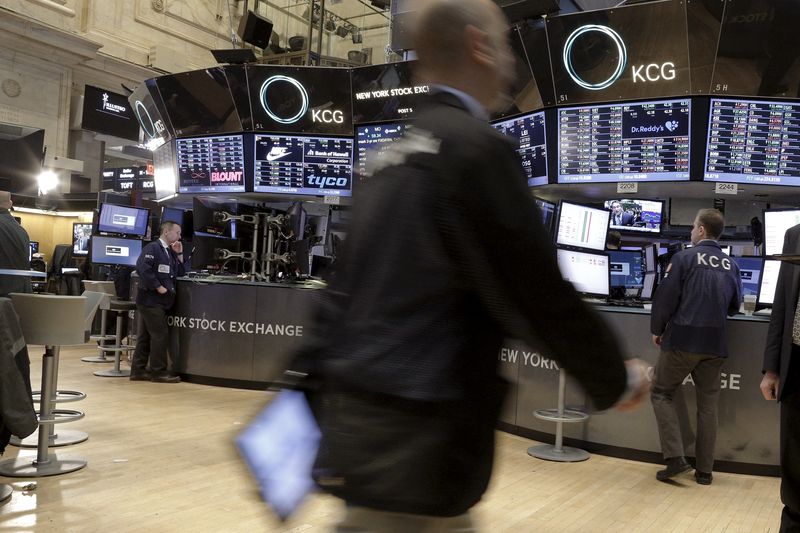Street Calls of the Week
The ASX is set to rise today. ASX 200 futures are trading 38 points higher, up 0.49% as of 8:20 am AEST following US stocks’ dramatic rally from session lows to finish May on a more positive note.
While there was a rebound on Friday, ultimately US equity markets finished last week lower.
“Volatility in the bond market and hawkish Fed speak encouraged traders to move to the sidelines,” IG Markets Tony Sycamore said.
“Also likely playing a part, when markets have outperformed during the month, as the US indices did in May, real money fund managers are forced to sell their outperformers to return to benchmark portfolio weightings for month-end reporting.
“In my opinion, the end of those month-end rebalancing flows on Friday afternoon in New York, likely coincided with the stunning rebound by US equity markets into the close.
For the week, the Nasdaq lost 1.44%, the Dow Jones lost 383 points (-0.98%) and the S&P500 dropped -0.51%.
Looking locally again, the ASX200 finished 0.34% lower last week at 7,701, weighed down by firmer-than-expected AU inflation, lower commodity prices and headwinds from offshore.
Despite this, the ASX200 gained 0.49% gain for May.
The main drags last week were Utilities down 2.73%, Materials down 1.35%, Energy down 0.60% and Industrials down 0.35%. On the flipside, Consumer Staples gained 1.02%, Consumer Discretionary was 0.83% higher, Telcos were up 0.59% and IT gained 0.26%.
There were some big winners and losers on the stock front last week. The biggest losers were Novonix Ltd (ASX:ASX:NVX) down 14.81%, Core Lithium Ltd (ASX:CXO) which lost 10.34%, Bubs Australia Ltd (ASX:BUB, OTC:BUBSF) which was down 10.34% and Betmakers Technology Ltd down 8.70%. In contrast, Catapult Group Ltd gained 27.61%, Drone Shield Ltd was 22.82% higher and Telix Pharma Ltd looked 17.32% better.
What happened last week?
(source Commsec)
European markets
Rose on Friday following softer US inflation data, which raised hopes of interest rate cuts by the US Federal Reserve. Despite higher than expected inflation figures in the eurozone, June rate cut expectations remained unchanged.
Consumer prices in the eurozone increased by 2.6% year-on-year in May, up from 2.4% in April. The European Central Bank is expected to cut interest rates at its June 6 meeting.
The FTSEurofirst 300 index rose 0.3% but lost 0.5% for the week, while it rose 2.5% in May.
The UK FTSE 100 index gained 0.5% but fell 0.5% for the week, increasing 1.6% in May.
Currencies
In currency markets, the Euro rose from US$1.0813 to US$1.0881 and was near US$1.0840 at the US close.
The Australian dollar increased from US66.27 cents to US66.71 cents and the Japanese yen strengthened from JPY157.35 to JPY156.56 per US dollar.
Commodities
Global oil prices fell as investors awaited the OPEC+ meeting on Sunday.
- Brent crude decreased by 24 cents to US$81.62 per barrel.
- US Nymex crude dropped by 92 cents to US$76.99 per barrel.
- Brent lost 0.6% for the week and Nymex fell 0.9%.
Base metal prices slipped.
- Copper futures fell 1.3%.
- Aluminium futures slid 2.1%.
- Copper fell 3.5% for the week, while aluminium was up 0.1%.
- Gold futures declined by US$20.70 to US$2,345.80 an ounce, and spot gold was near US$2,327 an ounce at the US close. Gold increased by 0.5% for the week and 1.8% in May.
- Iron ore futures fell by 35 cents to US$118.58 per tonne, posting a weekly decline of 0.1%.
What's next for Australian market?
As he does each week, Wealth Within chief analyst Dale Gillham runs the ruler over what to expect from the ASX in the coming weeks.
Sellers took control last week, with the All-Ordinaries index dropping over 1%. Interestingly, the market was back at the crucial 7,900-point level.
This level has proven to be a strong support level on three separate occasions this year, where the buyers have stepped in to prevent further declines leading to a gain of around 3% each time the market dipped.
What's exciting is that with prices at the 7,900-point level, we are at an inflection point in the market with a clear scenario ahead.
If buyers remain consistent, we should soon see prices begin to rise from this level, potentially pushing the market back up to test the previous all-time high of 8,167 points.
However, if the 7,900 support level fails, it will introduce a new dynamic we haven't seen this year, offering insight into what may happen in June.
In my previous report, I mentioned the possibility of the market hitting a mid-year low in June. Last week increased that likelihood, especially since June is historically a down month for the All Ordinaries Index. For the market to confirm a mid-year low in June, it would need to break below the April low of 7,743 points.
A decline in June would also offer traders and investors, who thought they had missed the mid-year buying opportunity, a renewed chance to enter the market.
This is exciting news, as this opportunity seemed unlikely two weeks ago, and the outlook is now clearer than it has been for some weeks. Therefore, I encourage investors to be prepared to act at the first sign of confirmation.
What about small caps?
The S&P/ASX Small Ordinaries finished the week on a high, gaining 1.76% to 3,022.90. Over the five days, it was 0.38% higher.
It has been a sluggish start to Monday on then news front but you can read about the following and more throughout the day.
